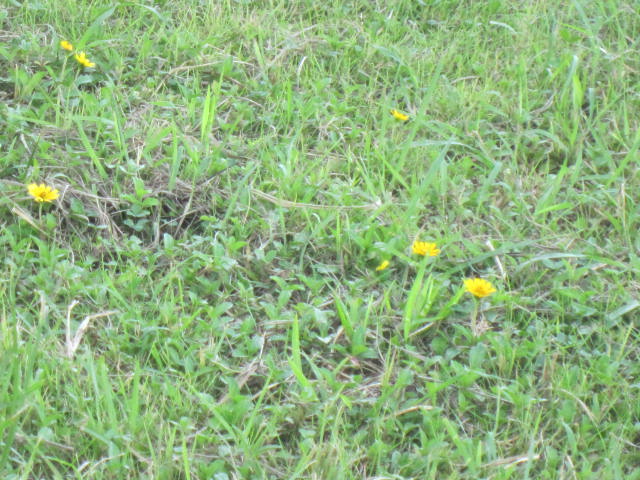
Fukushima vs. Chernobyl: How Have Animals Fared?
By RACHEL NUWERFor a little bird, bee or butterfly trying to make it in the world, which is the worse place to land: Fukushima or Chernobyl? On the one hand, there's the risk from the release of radioactive materials that occurred in Japan just over a year ago. On the other, there's the threat of mutations from accumulated environmental contamination over the past quarter-century from the Chernobyl accident in Ukraine.
Researchers set out to see whether these radionuclide-laden zones are equally detrimental to local animal populations, or whether one disaster site is more lethal.
"The two events are similar in the sense that there's lots of radioactive material in the environment," said Timothy Mousseau, a biologist at the University of South Carolina at Columbia. "But they're different in that right now Fukushima has the effects of the initial explosion and release of highly radioactive, short-lived isotopes, whereas in Chernobyl it's been 26 years so presumably those initial effects long since disappeared and what we're seeing now is primarily the effects of chronic multigenerational exposure."
Although past studies have tracked the genetic or developmental impacts on individual animals or plants from exposure to radiation, few have examined what happens to entire species populations in an area contaminated with materials from a radioactive disaster. Dr. Mousseau and his colleagues decided to investigate and compare the number of birds, insects and spiders in the two areas to see whether the immediate impacts or the long-term mutational effects are more problematic for species.
For their study, published in the journal Ecological Indicators, they conducted 1,198 censuses of spiders, grasshoppers, dragonflies, butterflies, bumblebees, cicadas and birds in Chernobyl and Fukushima. They then statistically analyzed their results to control for other variables that may cause the populations to differ like climate, rainfall and soil type.
In Fukushima, they found that the abundance of birds, butterflies and cicadas had decreased significantly as the level of radiation increased. Bumblebees, dragonflies and grasshoppers were not affected by the release of radioactive materials, however. Surprisingly, spiders actually increased in abundance with the rise in radiation.
Dr. Mousseau speculates that perhaps the insect prey that spiders normally feed on are weaker and easier to catch in the radioactive zones, and that spiders are possibly not particularly sensitive to the immediate contaminants. He predicts that over the long term, the spiders, bees, dragonflies and grasshoppers will eventually begin to drop off.
In Chernobyl, all of the animals decreased with increasing levels of background radiation. (Cicadas do not live in Chernobyl, however, so were not sampled.) "We think this is because of a combination of both direct radiotoxicity and mutation accumulation," Dr. Mousseau said
In Fukushima, animals have only cycled through a few generations at most since the disaster, so any mutations have probably not begun to manifest themselves. For short-lived species like insects, however, mutations could soon start to appear.
Initial surveys that Dr. Mousseau's team conducted in Chernobyl indicate that numbers of small mammals, reptiles and amphibians follow similar patterns in relation to contamination. Clean areas of the exclusion zone may attract more animals, he said, but their populations remain quite low in highly contaminated sections.
"Over all, it's a myth to suggest that animal abundances are higher in the Chernobyl exclusion zones," he said, referring to the assertion that Chernobyl's radioactive exclusion zone is in effect one big wildlife reserve. "There's evidence that some species perhaps evolved better genetic repair mechanism in the face of mutagens in the environment, but clearly others have not."
Contaminated areas of Chernobyl and Fukushima are unlikely to be hospitable habitats for years to come. In Chernobyl, for example, the amount of americium-241, a highly radiotoxic isotope if ingested, is actually increasing as its parent nuclide, plutonium, decays. Radioactive materials like cesium are brought back to the surface soil each year by plant growth and pollination.
And some plutonium isotopes have half-lives of 24,000 years. "These radioactive materials are going to be around for quite a while," Dr. Mousseau said. "We're looking at hundreds of years before many of the forested areas get better."
He and his colleagues plan to continue their surveys at the same time and place each year to see how the populations change.
Dr. Mousseau suggested that more rigorous scientific studies are needed to assess the impacts of nuclear power plant disasters. Such information could help decision makers weigh the hazards of potential accidents, he said.
"What's important now is that we continue to monitor how populations and individuals react to exposure to help predict long-term ecological effects in the future," he said.




















